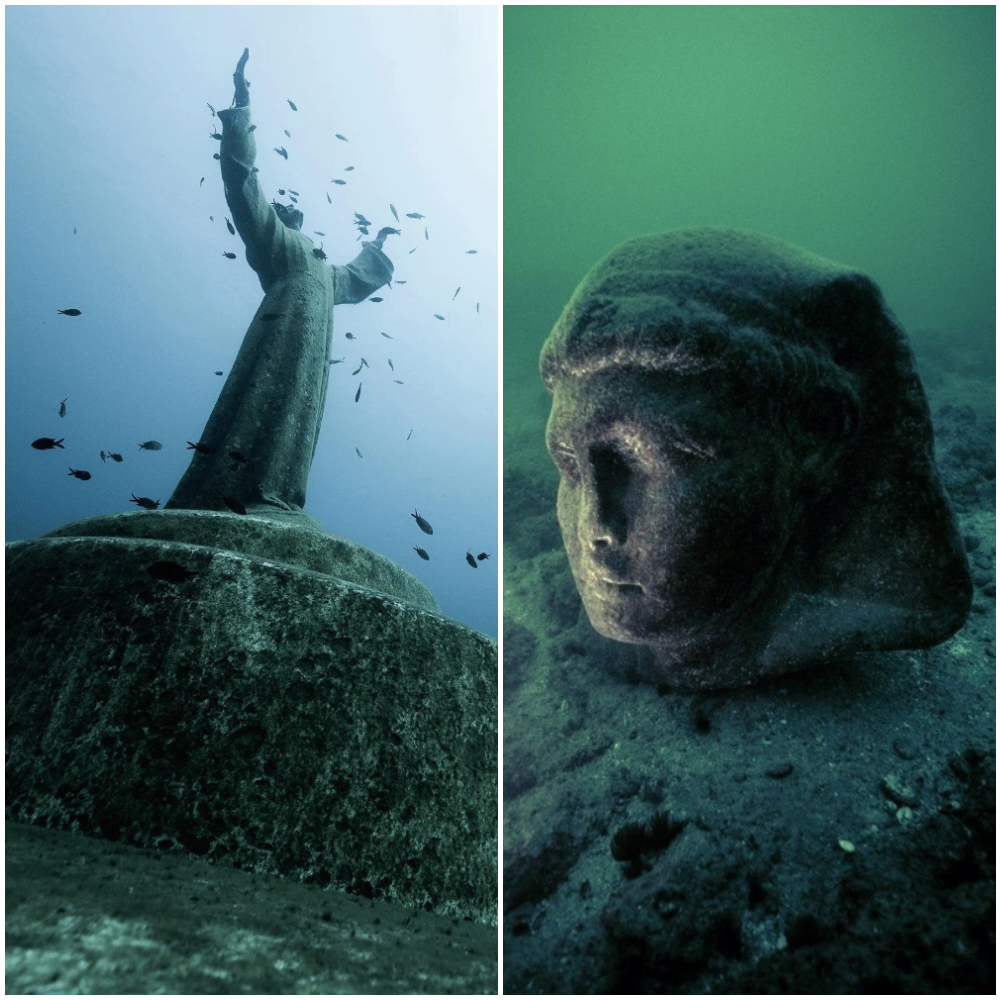
Some people are of the mind that space is the final frontier, and while it is true that an unfathomable amount of the universe has been unexplored, few people realize the our own planet has frontiers we barely know. 95% of the ocean, even with all of today’s technology, is unexplored. The things that lie in the deep are mostly unknown. That said, humanity has uncovered a great deal of interesting things in the ocean over the years: in this article, we’ll talk about the most interesting things to be found in oceans, rivers and lakes.
The Goliath Tigerfish
Located in the Congo River Basin and Lake Tanganyika, the Goliath Tigerfish is pretty much a giant, terrifying piranha. With a huge body that can reach up to 4.9 feet and weigh 110 pounds or so, it’s not hard to imagine how dangerous this thing could be.

It’ll eat pretty much anything it can outmatch, and has no qualms attacking people either. Its only known predator is the Nile Crocodile, which makes it even more of a threat. There’s no denying that this is one of the scariest animals one could still consider a fish.
The Sunken City of Dwarka
This city was founded by Lord Krishna, making it of significant mystical value to the Hindu culture. Supposedly, the city itself is over 9,000 years old. If that is true, then the city itself is almost 4,000 years older than the first Indian civilization that we are aware of.

Dwarka is also considered one of the four Dharmas. Interestingly, the government of Gujarat has an interest in making the city a tourist destination. We don’t know exactly how that would work, but we have to admit, it sounds pretty darn cool.
A P-38 Lightning Aircraft
This plane, dubbed the Maid of Harlech, crashed near the coast of Wales in 1942. The pilot survived the crash, but the plane itself was lost. That is, until it washed up on shore in 2007. Unfortunately, the exact position of the plane is confidential.

The weapons have been removed, but the plane has been left on the beach where it washed up. So while you can’t plan to visit it, being confidential and all, we supposed you could walk along the beaches of Wales until you find it lying around.
57 Love Letters From World War II
In 2012, a resident of New Jersey found a box of 57 love letters tied with a pink ribbon washed up on the shore of Sandy Hook Bay, a mere day after Hurricane Sandy had struck the area. These love letters were between sweethearts Dorothy Fallon and Lynn Farnham.
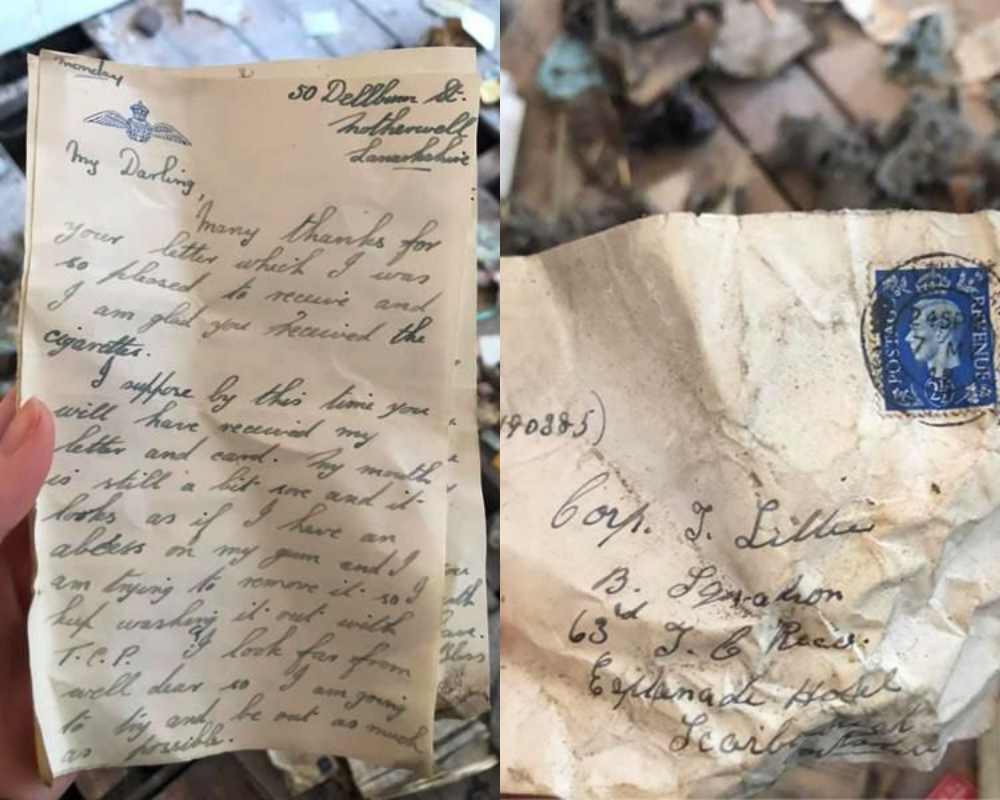
The letters were written between 1942 and 1947. The woman who found the letters tried to return them to their original owners, but she was only able to locate the family’s niece. Still, it’s amazing that the letters survived being the ocean for however long they were there.
Snowy Beachballs in Siberia
Believe it or not, these snowballs on a beach in Siberia are naturally formed. In 2016, natives stumbled onto hundreds of snowballs ranging from the size of tennis balls to nearly three feet in diameter. They could be found for an eleven mile stretch.
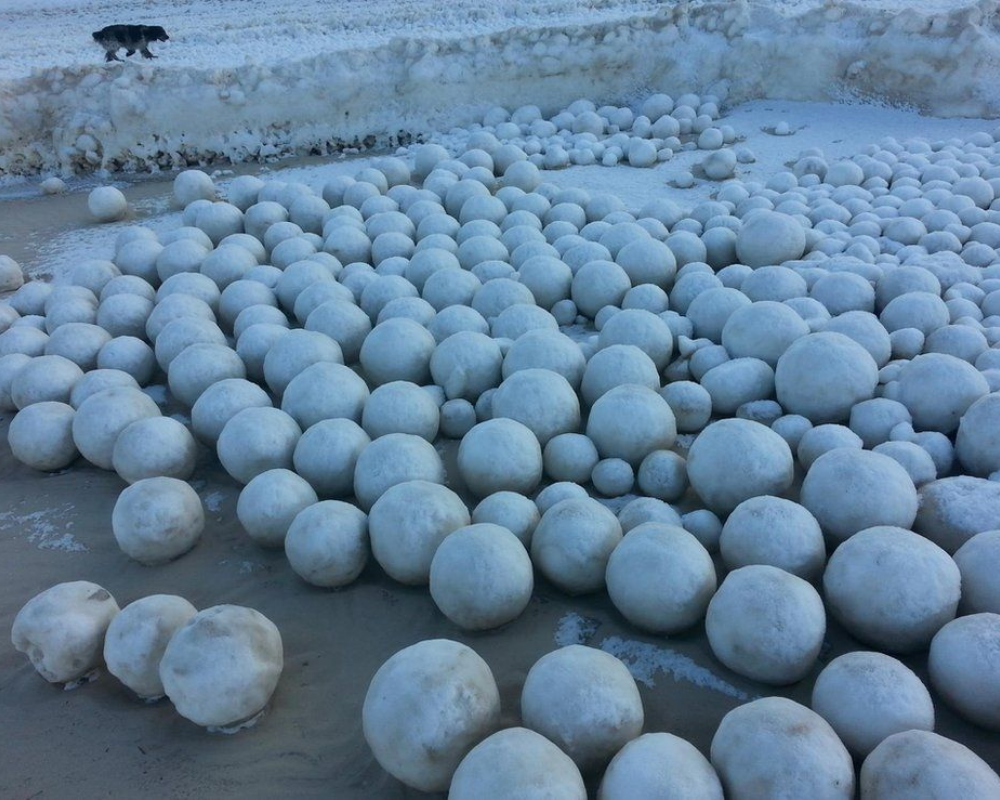
They were formed by a combination of tides and wind currents, and only formed under extremely precise conditions that don’t happen very often. Either way, it’s definitely one of the strangest things to be washed ashore on a beach before.
The Urechis Caupo
One day on Drakes Beach, California, the people who lived there found the beach covered in supposed fish that looked remarkably like… well, a certain type of genitalia. Thing is, they aren’t fish at all, but rather innkeeper worms.
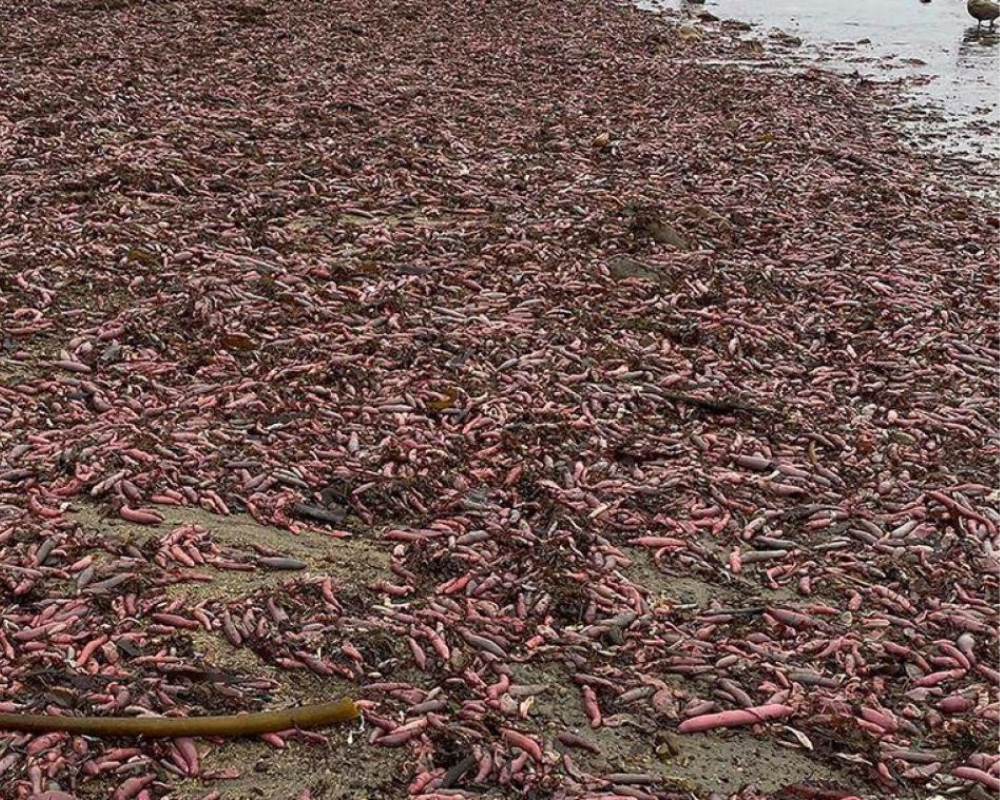
A large storm blew them away from their usual habitat, and they washed up on the beach in huge droves, confusing a lot of people that didn’t know any better. Needless to say, it made a lot of headlines, and also spawned a lot of internet traffic.
Bombs From World War II
It wouldn’t be all that surprising to stumble across a single unexploded bomb from World War II in the ocean. After all, a lot of combat took place in the ocean. But what about 87 unexploded bombs? That’s how many Hampshire locals found in 2011.

Needless to say, it’s extremely unlikely that 87 bombs were duds during a battle, and all ended up in the same place. No one is sure how they got there, but some believe the tides from the Supermoon at the time were responsible, but there’s no concrete evidence.
The Yonaguni Complex
Some people have actually debated whether or not this complex is man-made, but to us, it looks pretty obvious that it was. The Yonaguni Complex is 26 meters deep just off the coast of Yonaguni. If one is to believe the University of Ryukyus in Japan, it sunk into the ocean almost 2,000 years ago.
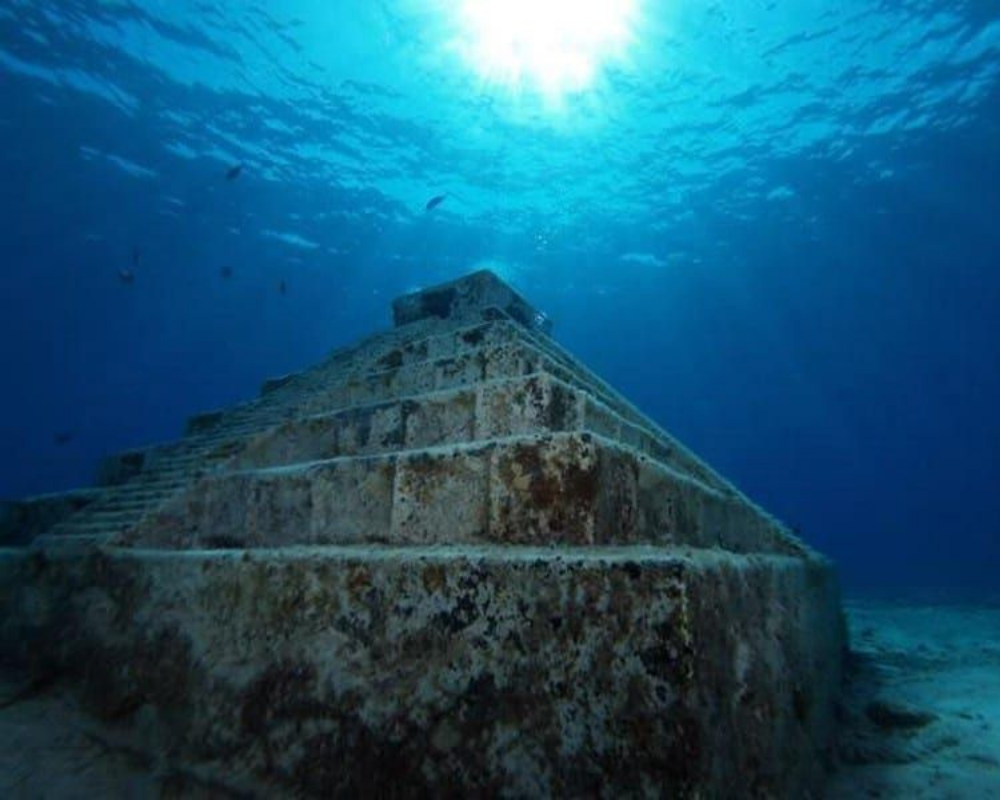
This would, of course, make it a Japanese Atlantis of sorts. That being said, there’s actually quite a few cities around the world that have sunk under the ocean over the years. That has to do with a number of factors, but we’re just saying that it’s more common than you’d think.
The S.S. Gairsoppa
When sunken ships are found, they don’t always have $210 million in valuable metals. But sometimes they do. The S.S. Gairsoppa was condemned to the deep by a German torpedo in World War II, sinking off the coast of Ireland in 1941.

Odyssey Marine, the company that located the vessel, has already recovered about 200 tons of silver, 20% of which they are sending to the British Treasury and its arks. As for the other 80%, we don’t actually know. Do they get to keep it?
The Wels Catfish
No, not every Wels catfish is as large as the one in the picture below. But considering how long these fish can live, that being around 50 years, they most certainly can get this large. One of the biggest ever found was 16 feet long and around 660 pounds.

They’ll eat just about anything they can get their mouths on, and won’t hesitate to attack even people if their nests are being disturbed or threatened. They mostly live in Europe, but one way or another, they’re an amazing beast to be found in the world’s waters.
The Engines of the Saturn V
In the earliest days of space exploration, many rockets were designed to break apart in stages and fall back to Earth, though they were not always recovered. Case in point, Amazon CEO Jeff Bezos led an expedition that discovered the engines of the Saturn V rocket, crucial to the Apollo 11 landing.

As for why the engines were never recovered, it’s either because NASA couldn’t find them or that they didn’t have the infrastructure in place to do so. Either way, they’ve been resting pretty comfortably at the bottom of the ocean for some time.
A 2,400 Year Old Vessel
This old 75 foot long Greek vessel is believed to be 2,400 years old or more, but it holds the more important distinction of being the oldest impact shipwreck in human history. It’s resting under two kilometers of water in the Black Sea.

As for why it’s still in such remarkable shape, relatively speaking, that has to do with the lack of oxygen, at least compared to the surface. This has helped it remain mostly intact even after all of this time, making it truly incredible.
A Huge Swarm of Rubber Ducks
There’s actually an interesting story behind this one. Way back in 1998 or so, a ship that was traveling between Hong Kong and the U.S. spilled some 28,000 rubber ducks into the ocean during a storm. They’ve been floating around ever since.

That’s right: even now, decades later, you can find these rubber ducks floating around, though some of them have probably been lost to one thing or another by now. They’ve been spotted off the coast of several countries over the years.
The Baltic Sea Anomaly
When this anomaly was first discovered by a team in 2011, a lot of people took it as evidence of UFO landings. And you know, it’s not hard to see why. Just look at the thing! But ultimately, scientists determined that it was merely a glacial deposit.

Why does it look so weird? Well, we’re not qualified to make any sort of statement on that. Maybe it really is just a deposit. Or maybe it does have something to do with aliens? Whatever it is, it is certainly one of the most interesting things to be found in the ocean.
54 Chopped Off Hands
Unfortunately, we’re not joking. In a popular fishing location between China and Russia, a fisherman came across a dismembered hand and called the police. When the police started to investigate, they ended up finding 54 of them. Worst part is, there’s no indication why they were in such a state or where they came from.

Technically, they were found in the snow and ice around the river and not directly in it, but we’re counting it as one of the most bizarre things to be found in or around a body of water, and we think you’ll agree with that sentiment, all things considered.
An Ancient Greek “Computer”
No, not really a computer in the way you’re thinking about. Called a Antikythera Mechanism, this analog device was used to calculate and predict the positions of astronomical bodies, as well as things like eclipses. Divers discovered it in the early 1900s.

It’s a computer in the sense that it was a machine used to compute things, but in being such a thing, it holds the distinction of being the first computer made by man: that we are aware of, at any rate. Either way, definitely a great discovery.
The Stonehenge of Lake Michigan
Obviously, we’re not talking about the actual Stonehenge. But there is a very similar structure made of stones at the bottom of Lake Michigan. They are arranged in a circle, and one has a carving of a Mastodon, an animal extinct for roughly 10,000 years.

We’re assuming this “Stongehenge” was made so long ago that Lake Michigan wasn’t actually a lake yet, though that’s just speculation on our part. It certainly seems like the most likely explanation, at least from our limited knowledge on such matters.
A Giant Lego Man
Technically speaking, this eight-foot-tall Lego man was not found in the ocean. He was actually placed there by an artist named Ego Leonard, who had made four of them so far and placed them on beaches in several countries, including the UK and the Netherlands.

However, we’re willing to include it on this list since he was consistently made them look as though they washed up on shore from the ocean, and technically speaking, you can only find these particular giant Lego men near the ocean, so we’re counting it.
The Mariana Trench
Sure, this is a well-known deep sea abnormality, and it may just be a trench, but it’s one really massive trench that is very difficult to comprehend. It’s deeper than Mount Everest is tall, and five times longer than the Grand Canyon.

Many people have tried to explore it, but all attempts have failed to do that completely. It’s just so large and so deep that it’s almost impossible to manage, at least with our current level of technology. But maybe one day, we’ll see every freakish animal it has to offer.
The City of Pavlopetri
This city, which translates to Paul’s Stone, was discovered by Nicholas Flemming in 1967 between the Pounta coast and Elafonisos village. Presumably, the village dates all the way back to 2800 BC. It has the distinction of being the oldest submerged city in the Mediterranean Sea.

Because of its Bronze Age Architecture, it has been labeled as a UNESCO underwater cultural heritage site. No one is really sure why or how it sunk, but many believe that this city was the inspiration for Plato’s story regarding Atlantis.
Giant Squids
Speaking of freakish animals of the deep, one can’t have such a discussion without mentioning giant squids. These things can be human sized and much, much bigger, and seeing them is rare, as they usually live thousands of feet below the surface.

And back in 2005, hundreds of giant squid showed up on a beach in California, full of parasites and with no explanation for how they had gotten all the way to the surface in such numbers. One way or another, giant squids are an oceanic enigma.
A Lost Indian City
In 2004, there was a huge tsunami that happened near India, but while it was destructive, it also uncovered the ruins of a city lost to time, near Mahabalipuram temple in Tamil Nadu. This city included a giant granite lion and many other stone statues.

Archaeologists believe it used to be a small seaport city before the water rose and submerged it, dating back to the seventh century AD. This is an honorable mention because it wasn’t hidden in the ocean initially, but was at a later date.
Loki’s Castle
This series of active hydrothermal vents between Norway and Greenland may not seem like much to write home about, but they do look very cool. More importantly, since it was discovered in 2005, it has been a point of scientific study for a particular reason.

A particular species of microorganism found there are believed to be the missing link in the evolution of the first animals to walk the Earth. Whether or not that’s true, it’s still of enough value that it can be considered an important underwater discovery.
The Lost City of Heracleion
This city was special because it was actually mentioned in many Egyptian texts, but no one had ever been able to find it or even any evidence as to whether or not it was a real place. That all changed in 2000 when it was finally discovered.

It was discovered by archaeologist Frank Goddio, who found it submerged roughly seven miles off the coast after Egypt after five years searching for it. The sunken city has many ancient texts, gold, and large stone statues, making it a great find.
The Silfra Crack
The Silfra Crack is a big underwater fissure between the Eurasian and North American continents. You can find it near Iceland, where it is one of its most popular tourist attractions due to having some of the clearest water in the world.

The fissure was formed by the divergent tectonic plates between the two continents, a gap which widens by about two centimeters every year. Sure, it’s not as big a hole as the Mariana Trench, but being a fissure between two continents makes it pretty interesting.
The Undersea River in the Black Sea
In 2016, currents of water were discovered at the bottom of the Black Sea that were 350 times greater than even the River Thames. Much like a surface river, it’s carved out deep channels and even has rapids and waterfalls, a strange sight underwater.

If this river did exist on the surface of the plant, it would rank number six as far as volume of water flowing is concerned when it comes to rivers. That makes it one of the strangest things you can find under the ocean, even if it’s just more water.
The New Jersey Train Graveyard
Not too far from the New Jersey Coast, archaeologists have discovered not one, but two well-preserved steam trains from the 1850s, under ninety feet of water. No one is really sure how the trains got there or why. There are no records of these trains being built or lost for any reason.

There’s some speculation on the possibility of the trains being lost in a storm while being shipped on a barge, but there’s no concrete evidence to support that, even if it does seem like a pretty likely explanation for how those trains got there.
The Ghost Fleet of Chuuk Lagoon
Discovered 20 years after World War II, this ghost fleet is the site of more than 300 aircraft and ships that were sunk when the Allies bombed a base at Chuuk Lagoon. It’s probably one of the largest collections of human craft in one graveyard.
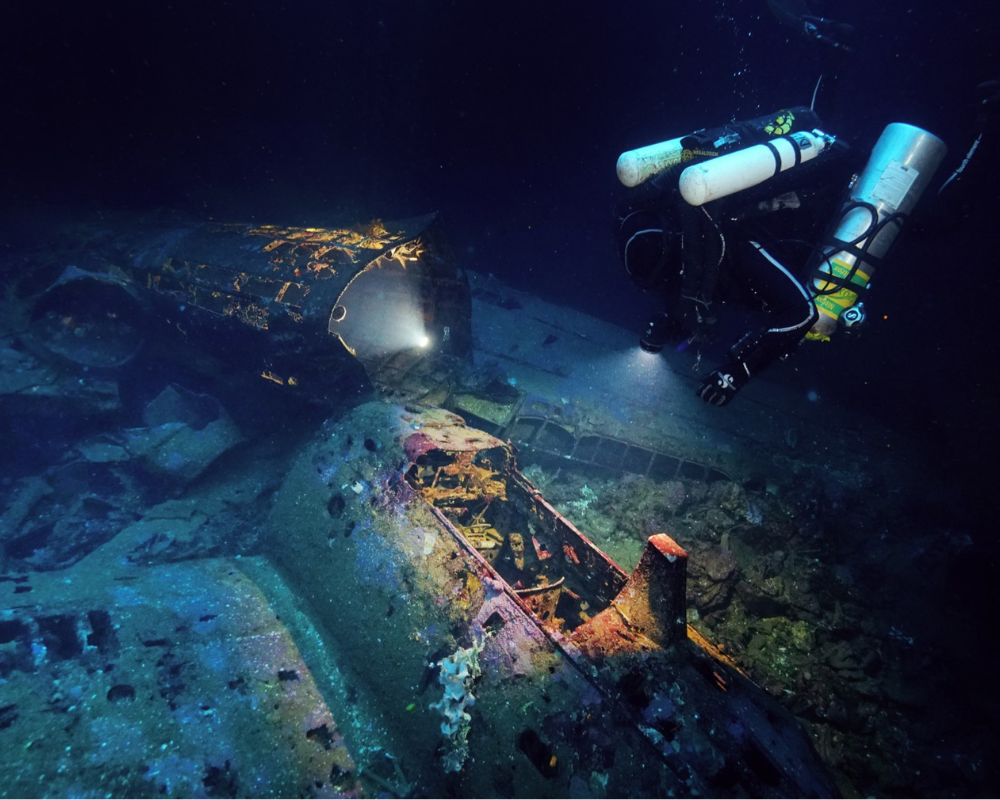
It’s a little creepy though, as many skeletons can still be found in cockpits and other parts of the vessels. We know that war has to happen sometimes and it will always be terrible, but even so, this eerie graveyard is a depressing reminder of the cost of conflict.
An Underwater Museum in Cancun, Mexico
The thing about this underwater museum is that, unlike all of the other underwater structures we’ve mentioned so far, this one was intentional put underwater. Started in 2009 and opened in 2010, it has three separate galleries submerged around 10 to 17 feet in the ocean.

With over 500 sculptures, including many life-sized ones, this museum sculpted by only six people, making it a pretty big undertaking. As for how they managed to do it, we’re just as curious as you are, we promise! It sure seems interesting.
The Atocha
Treasure hunter Mel Fisher searched for 16 years before finding the Nuestra Senora de Atocha shipwreck in 1985. The ship, also referred to as the Atocha, was found off the coast of Key West in Florida.
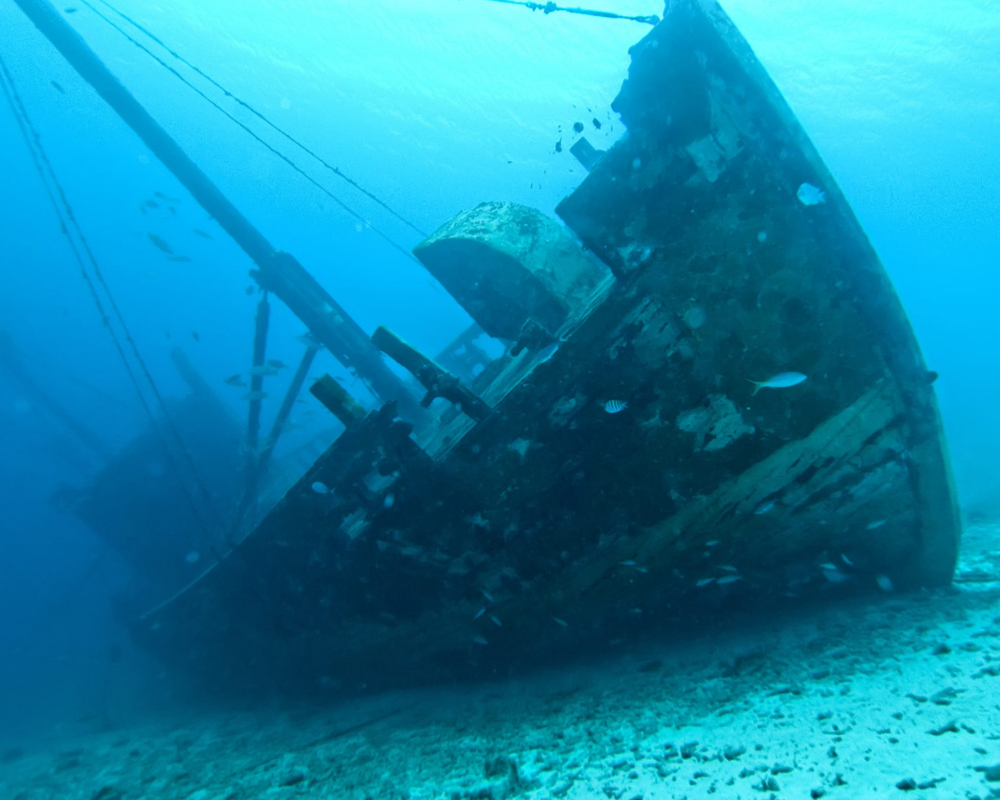
The ship was loaded with treasure from Havana, Cuba when it sailed into a hurricane. It is estimated that all the gold and emeralds found on the Atocha are worth over $450 million. You can check out some of these treasures at the Mel Fisher Maritime Museum.
The Esmeralda
Vasco da Gama’s Esmeralda is the oldest shipwreck to come from Europe’s Age of Exploration. The ship was discovered in 1998 but it wasn’t authenticated until 2016.
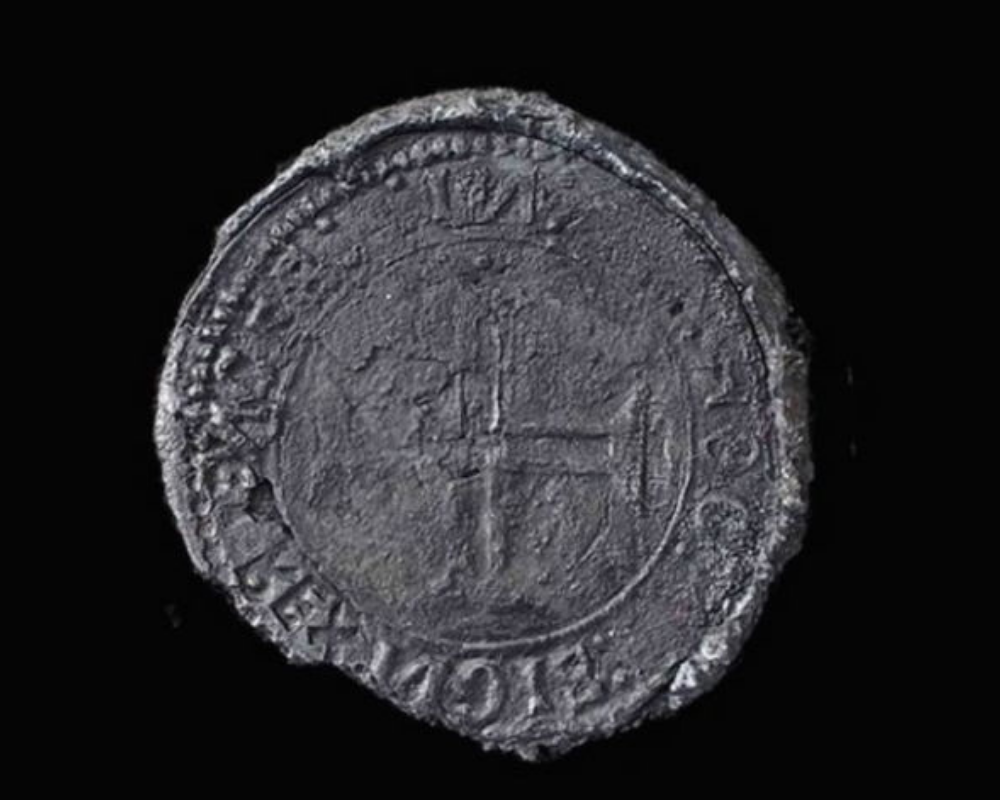
Interestingly enough, the shipwreck occurred way back in 1503 when a storm hit the Esmeralda while the boat was traveling in the Arabian Sea. Artifacts such as rare coins (as seen here) and ship bells helped confirm the ship’s identity and to this day, more treasures are being found at the wreck.
Emerald Treasure
Jay Miscovich was an amateur treasure hunter until he discovered over 10,000 emeralds off the coast of Key West, Florida back in 2010. The mass media went crazy when experts valued the treasure at half a billion dollars.
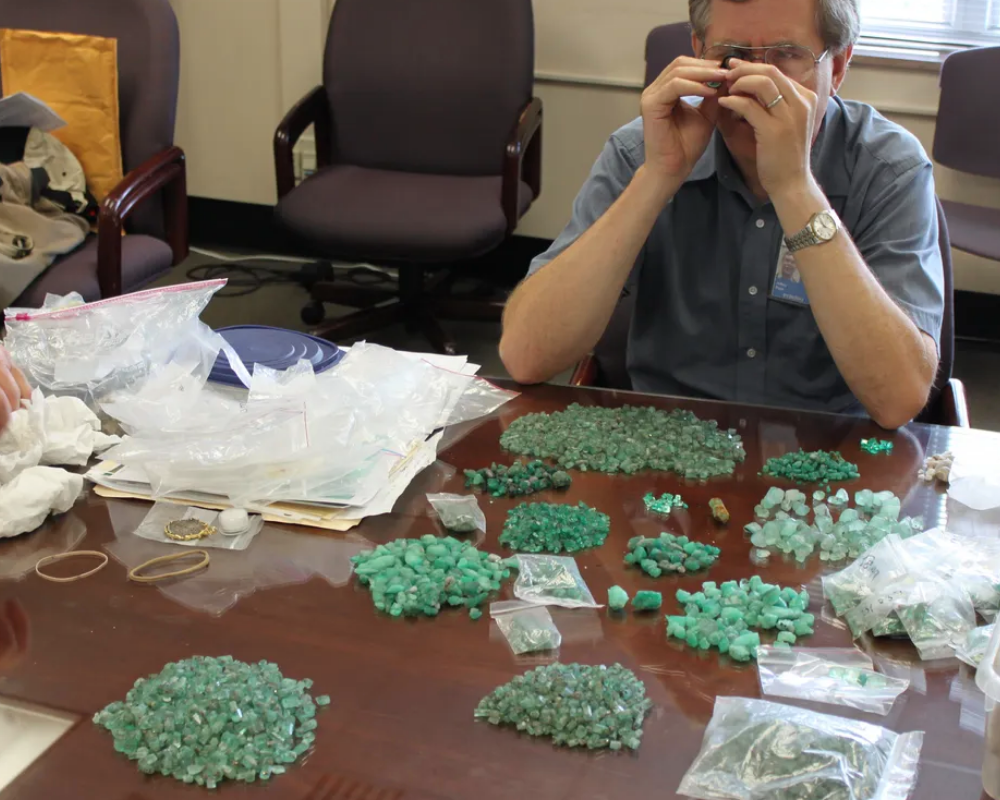
However, when the federal government heard of his discovery, he was granted only temporary ownership of the emeralds. Miscovich was so upset by this decision that he took his own life in 2013.
An Exploded Star
German researchers discovered pieces of a Type 11 supernova star while drilling in the Pacific Ocean. The star remains were discovered in the excess of a magnetic bacterium, which had eaten away on the stellar iron.

Scientists predicted that this came as a result of a supernova explosion that took place 2.7 million years ago. They made this prediction based on the fact that the iron-60 that was found is too young to have originated on planet Earth.
Statues of Cleopatra and Caesarion
Approximately 20,000 artifacts were discovered in the ancient city of Alexandria back in 1998, shortly after the lost city was discovered. The discovery made headlines due to the world’s continued interest in Queen Cleopatra (the city’s ruler).

Some of the artifacts that were found include remains of palaces, statues of the Goddess Isis, a Sphinx, and lastly, statues that are believed to be a tribute to Cleopatra and Julius Caesar’s son, Caesarian.
Trucks at the Larnaca Bay
The two vehicles you see here were among another 120 that went down with the ship MS Zenobia in June of 1980. The Swedish-built ferry was launched in 1979 and capsized and sank a year later.

It was found in the Mediterranean Sea, close to the Larnaca Bay in Cyprus. The MS Zenobia now rests in around 42 meters of water and was named by The Times as one of the top ten wreck diving sites to visit in the world.
Doggerland
Between the mainland of Europe and the British Isles, a sunken landmass was recently found. This area has since been called Doggerland and is believed to have been home to hunter-gatherers and mammoths. According to Listverse, Doggerland sank into the Atlantic sea “8,500 years ago.”
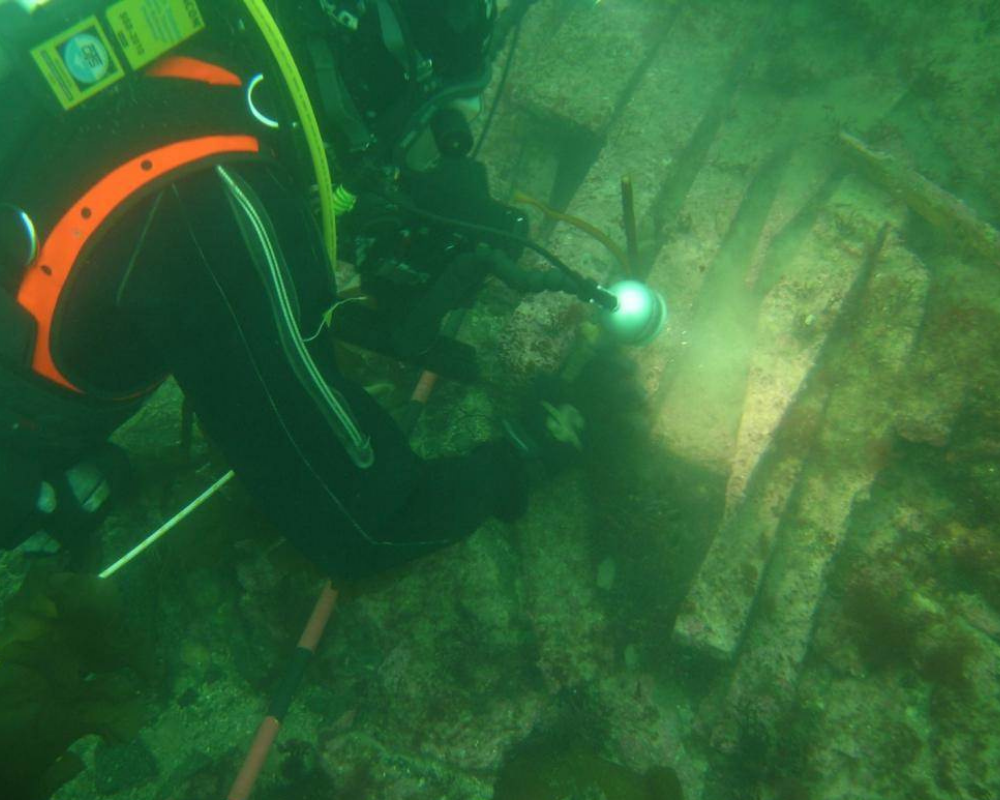
The area was first identified back in the early 20th century and became of interest in 1931 when a fishing trawler discovered a barbed antler point.
The Lamprey Fish
This next underwater discovery will make you feel lucky to reside on land. Meet the Lamprey fish which was observed in Lake Erie in 1921. While initially these scary-looking creatures were thought to be eels due to their shape, they are actually a type of parasitic fish.
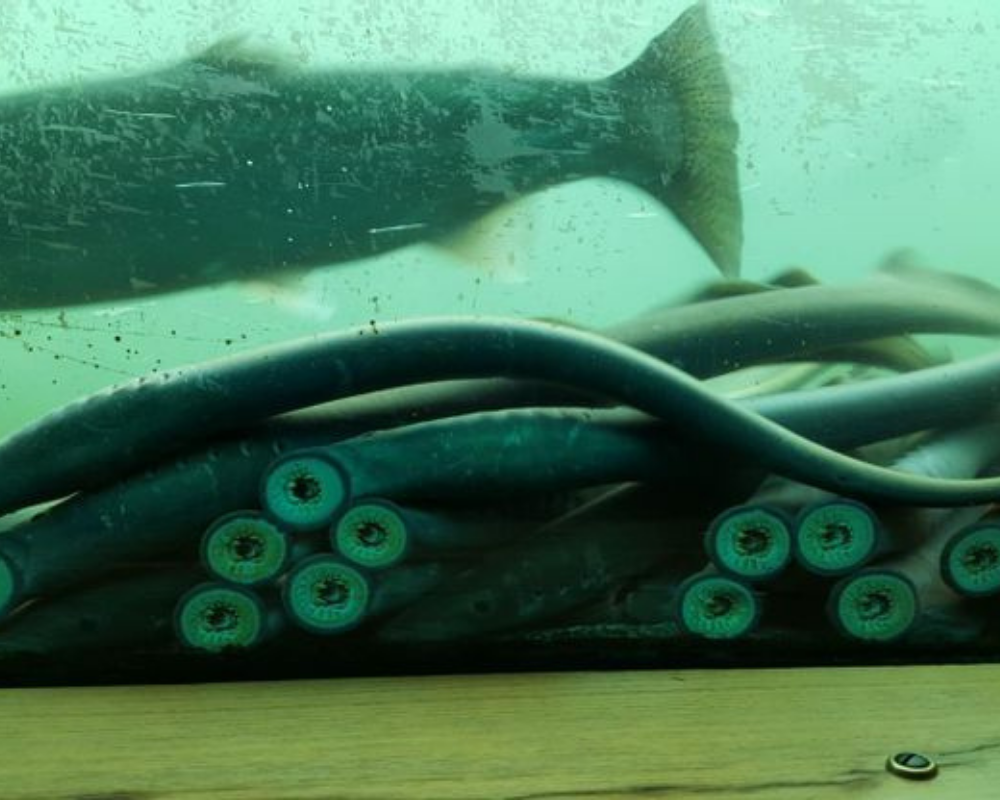
The lamprey is now known for its sucker-like mouth and rows of teeth that fit along its edges. With this, they are able to feed on the fluids of other fish that it attaches itself to, like a vacuum.
A Bronze Age Sewn Boat
Marine researcher Guilia Boetto discovered a Bronze Age sewn boat in Croatia back in March of 2014. The boat was found in the Zambratija Cove and the wreck dates back to 1,200 BC which makes it at least 3,200 years old.
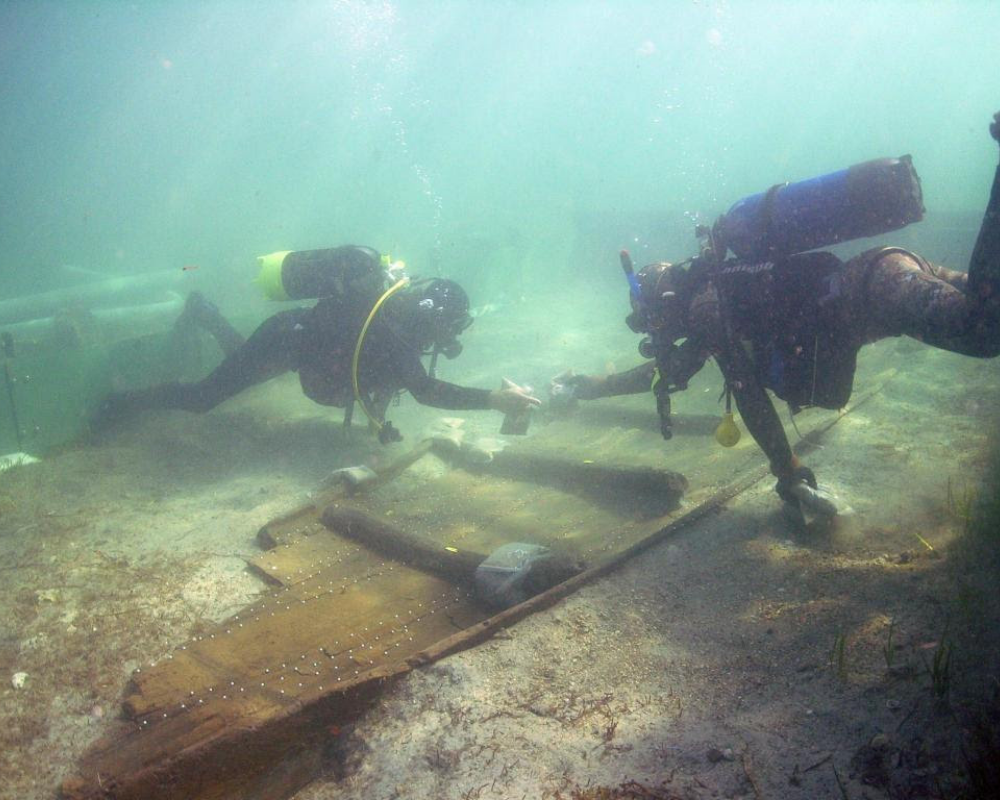
This discovery provides us with an incredible insight into how boats were made back in those days – it was found sewn together by roots, ropes, and what seems to be willow branches.
Christ of the Abyss
This may seem like a statue that has been submerged for a really long time, but in reality, it’s only been underwater since 1954, and it was placed there on purpose. This bronze statue of Jesus Christ was placed in the Mediterranean near the place the first Italian scuba diver died.

It’s eight feet tall, and even though it isn’t some relic from a bygone civilization, it’s still a very important underwater statue made of bronze that is frequently visited by divers around the world. And no matter how old it is, it’s pretty majestic.
The MS Zenobia, Titanic of the Med
We felt that it would be cliché to mention the Titanic since everyone knows about it, but what about the MS Zenobia? This Swedish ferry launched in 1979 and, like the Titanic, sunk on its maiden voyage in 1980. It sank near Cyprus.

It’s only 138 feet underwater, but is considered one of the top ten shipwreck dives in the world, and it is often likened to the Titanic since it has a similar size and a very similar tragic story that involves sinking on its first voyage.
The S.S. Central America
Also called the “Ship of Gold,” this vessel was mainly used to transport huge amounts of valuable gold and silver between Central America and the United States, until it was sunk in 1857 by a hurricane. A whopping 280 feet long, the ship sank with about 3,000 pounds of gold.

When the wreck was discovered in 1988, about $150 million of the gold was recovered. And yet, in 2014, another expedition found thousands of gold coins and dozens of gold ingots, so it seems likely that there is even more gold on the ship somewhere.
The Galleon San José
This old Spanish galleon was destroyed by a British squadron near Baru. Plenty of ships suffered such a fate, but this one was carrying a whole lot of silver and gold, which was valued at around $17 billion in 2018. It was found in 2015 by the Woods Hole Oceanographic Institution.

Discovered near Cartagena, Columbia, it goes without saying that the people who discovered this sunken ship and all of the treasure with it had to pony up in a legal sense, as there was bound to be a whole lot of discussion about who that treasure rightfully belonged to.
A Mammoth Bone
Dogs like bones, but they don’t often find bones quite as massive as this one. A dog named Daisy discovered this eight pound bone fragment while taking a stroll on the Dunwich coast, and her owner, quite confused by it, contacted the authorities to shed some light on it.

Believed to be over 2,000 years old, no one is really sure how this mammoth bone made it onto the shores of England, how long it was in the ocean before getting washed up, or even a rough idea of where it came from. What we do know is that Daisy probably would have liked to keep it.